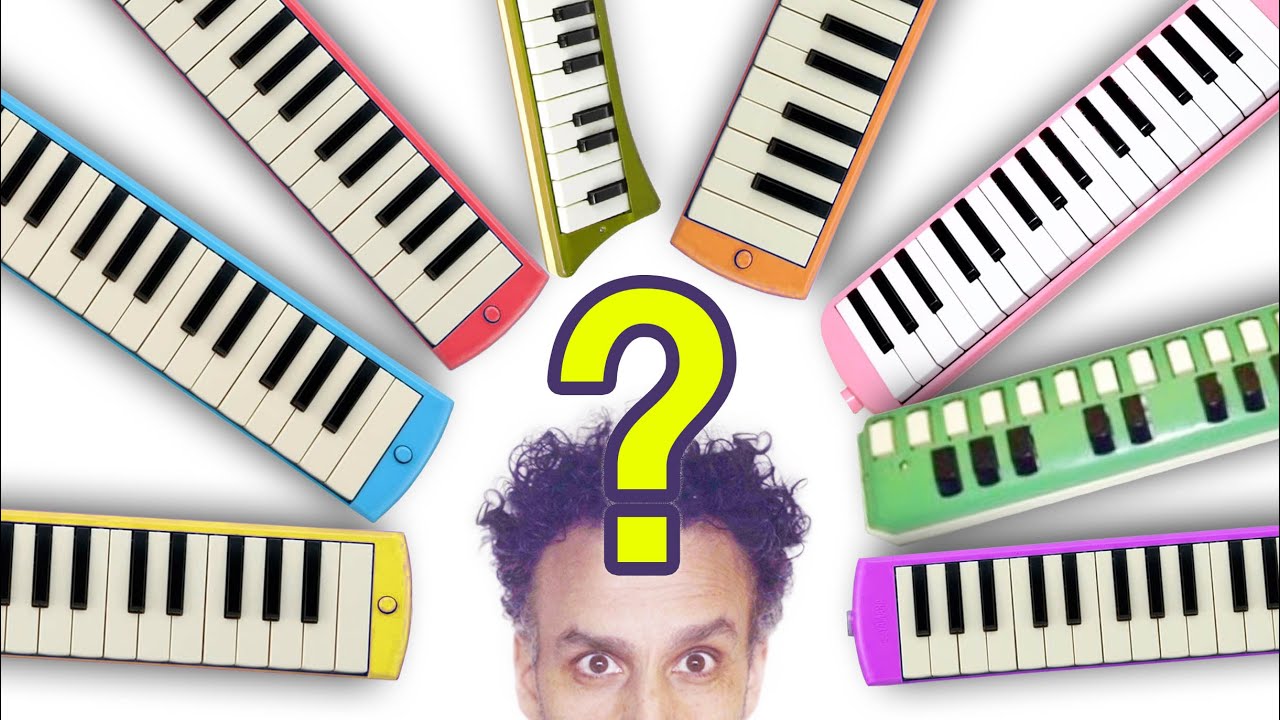Articles
A collection of articles about the melodica
-
Playing Songs on Melodica
If you have a melodica, you have the potential to play any of your favourites songs. I enjoy playing all genres, from classical to pop, folk to jazz. A standard melodica has between 30 and 37 keys, which is a big enough range to handle just about any song. As a beginner, there’s two ways you can go about playing songs on melodica – playing by ear, or learning to read music. Songs on melodica…
Read More » -
How to hold a melodica
There’s two ways to play a melodica, sitting down or standing up. 1. The Sitting Position In this position, you place the melodica on a flat surface in front of you. It could be on a table or on your lap. You connect the hose (the long white plastic tube) to the instrument, and blow into it while pressing the keys. Advantages of the sitting position: You can use both of your handsYou can see…
Read More » -
How to play melodica songs
If you want to play your favourite songs on the melodica, there’s two ways of going about it. The 1st way The first way is watching YouTube videos of others playing, and trying to copy what they do. This can work to a certain extent- you’ll manage to play something that sounds vaguely like the song you’re trying to play. But it will never make you a good player. And there’s the danger of picking…
Read More » -
Is the melodica similar to a piano?
You may have noticed that the keyboard of a melodica is exactly the same as a piano, only smaller. So if you’ve already had a few piano lessons, you’ll have a distinct advantage, as you’ll already be familiar with the piano layout. Likewise, if you choose to learn the melodica, you’ll have an advantage if you decide to learn piano at a later stage. Although they share the same keyboard, they have a very different…
Read More » -
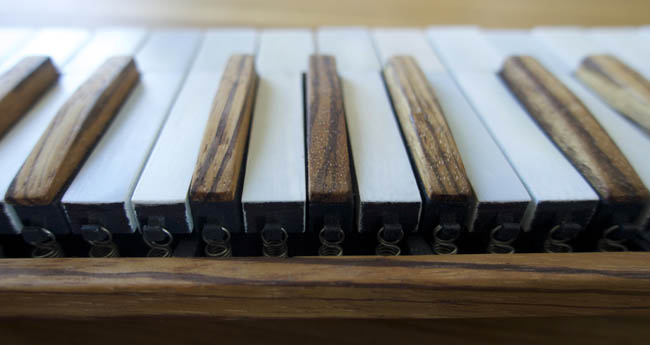
3D Printing a Melodica (14) – it’s finished!
The melodica is ready! What started out last summer as an idea for a project, has finally come to life. Thanks for all the encouragement over the months, it’s all been really helpful in keeping me motivated. I’m really happy with this little instrument – it’s just what I hoped it would be. Here’s some photos I took today And a little demonstration video!
Read More » -
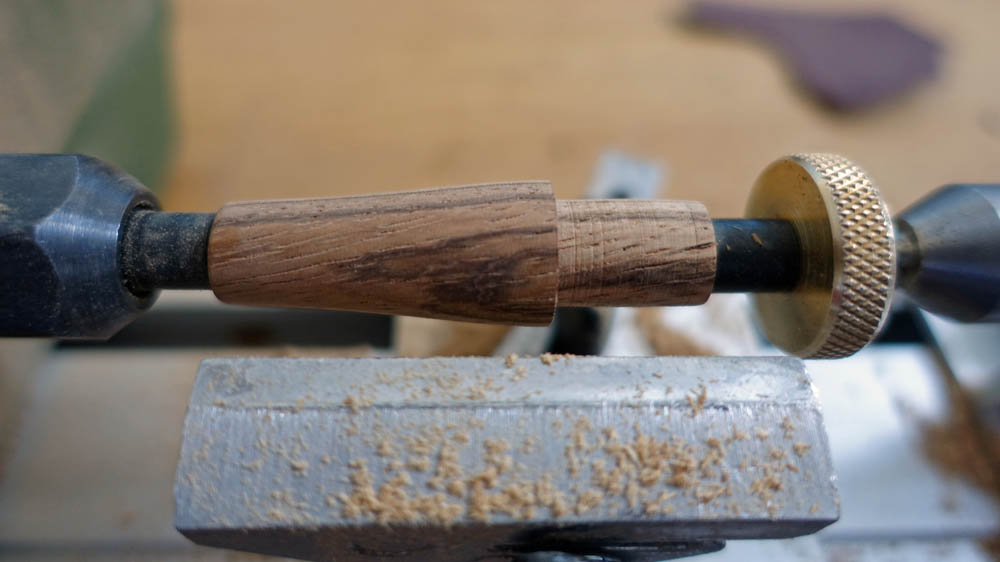
3D Printing a Melodica (13) – finishing touches
Just two things to complete on the melodica before I can say it’s finished. There’s the mouthpiece, and at the other end of the instrument, the moisture-release valve. What mouthpiece? There’s many styles of mouthpieces for the melodica, so what shape did I choose? I’ve never been a fan of long mouthpieces, as I like to be as close to the reeds as I can. I decided to go for something short simple and symmetrical,…
Read More » -
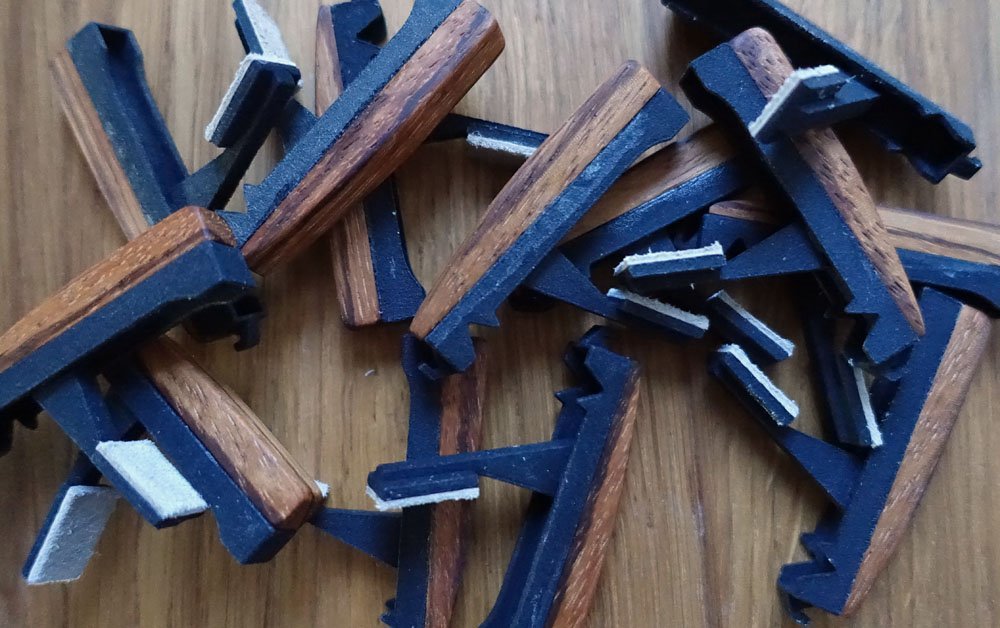
3D Printing a Melodica (12) – making melodica keys
Once I knew that this melodica was airtight, and working well, I can finally get to my favourite bit – making it look nice! Ivory ‘white’ keys I started with building the little piano style keys. I already had some ivory pieces salvaged from an old piano. It was time to cut them to size. Of course, I needed a new machine just for this purpose, and found a lovely miniature table saw (Proxxon KS…
Read More » -
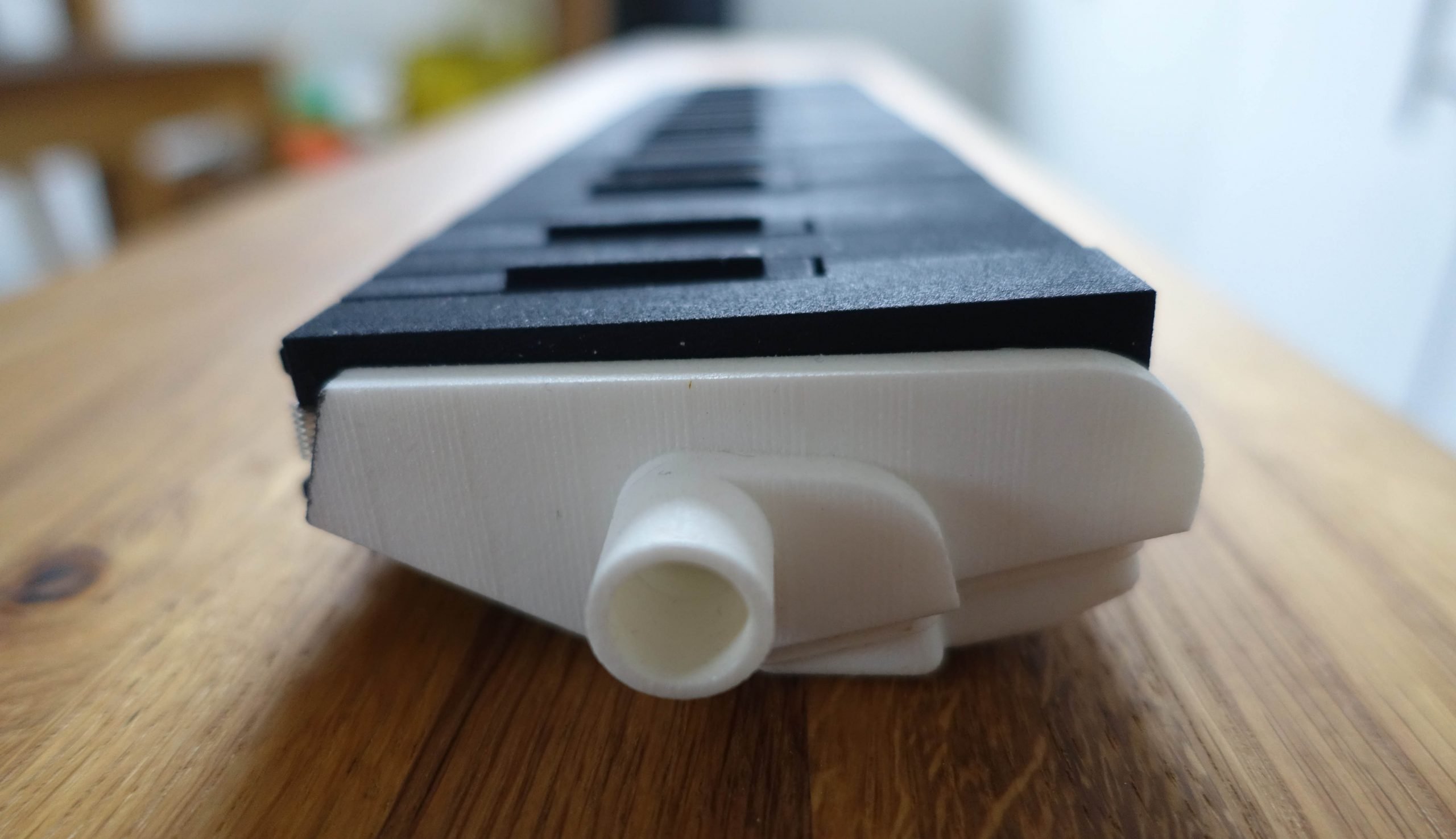
3D Printing a Melodica (11) – second attempt
A new material? After my last attempt warped under the pressure of the springs, I ordered all the melodica parts again, with a few design modifications, in a new material. This time the material of choice was nylon, otherwise known as “Strong and Flexible” at Shapeways. Although very strong, and capable of good accuracy, this was a material I’d rejected previously because if its porosity. But maybe I could seal the essential areas which needed…
Read More » -
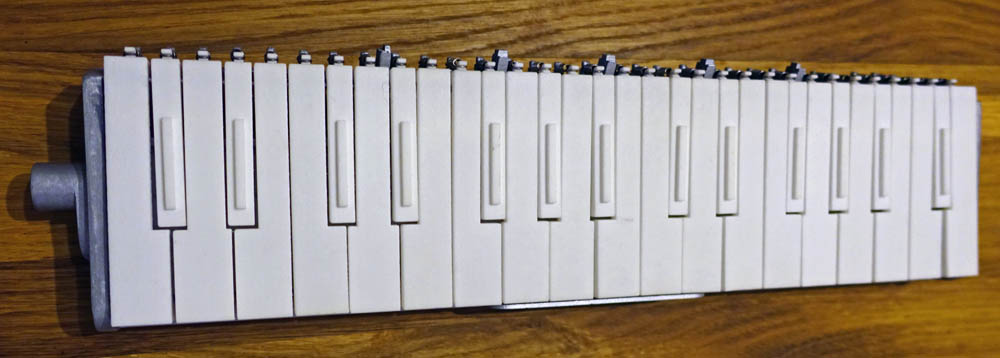
3D Printing a Melodica (10) – first assembly
The new melodica keys have arrived, but before putting all the parts together, I decided to try painting the main body. The main body (‘skeleton’) is made from Polyjet material which has had extra UV treatment to make it even harder. Although Stratasys, the company who make Polyjet machines, say that no ‘finishing’ or sanding is required before painting, my model had many rough edges that needed preparation with fine sand paper. I made a…
Read More » -
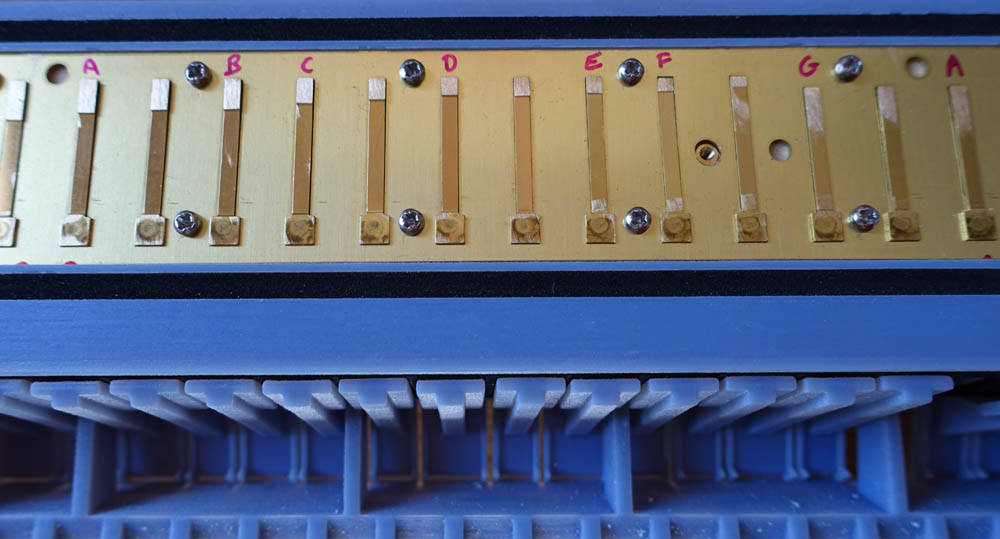
3D Printing a Melodica (9) – Attaching parts
28 October 2014 Attaching two 3D printed parts I decided to try attaching the chamber cover to the main melodica body. I had already ordered some small brass inserts to fit into the holes on the main body. These were to provide something for the screws to screw into – like an anchored nut. I couldn’t quite get them in all the way, but this shouldn’t be a problem, as they’ll protrude into pre-existing holes…
Read More » -

3D Printing a Melodica (8) – Soft sticky prints
21 October 2014 The melodica parts have arrived… I eventually decided to send my 3D files over to a printing company based in the west midlands of England, 3D Alchemy. I learnt from the previous test pieces that printing in plastic (ABS) would not provide the surface quality I needed, so I opted to pay twice the price and have it printed in resin on an Eden 500V printer, using Polyjet technology (resin cured with…
Read More » -
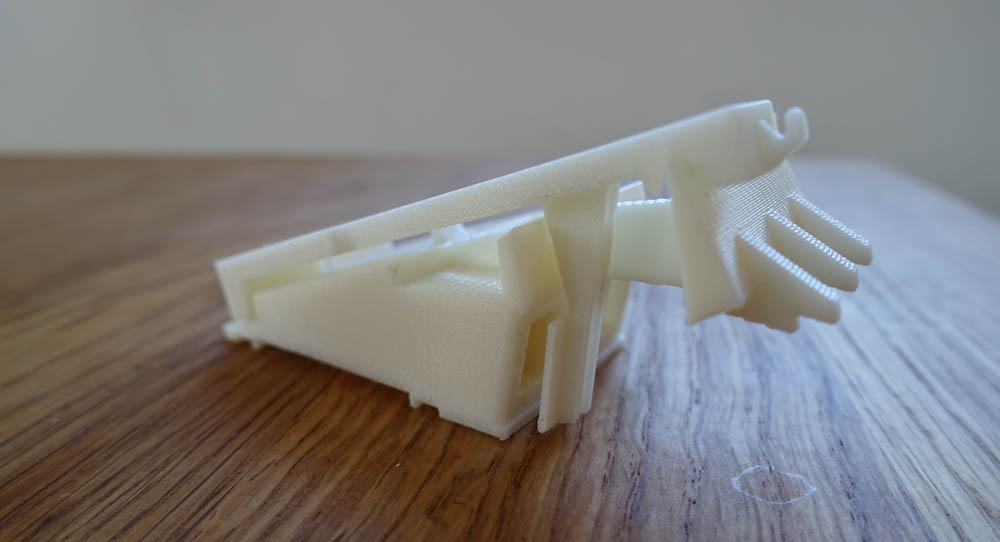
3D Printing a Melodica (7) – Printer hell
18 August 2014 My new 3D printer After my last post, I visited the 3D printing shop, where they were putting on a demonstration for beginners. I showed them a photo of what I was intending to make, and it all looked very straight forward. I went ahead and ordered the FlashForge Creator Pro. Once I got it home, I eagerly set it up (a couple of hours work, as there weren’t any detailed instructions),…
Read More » -
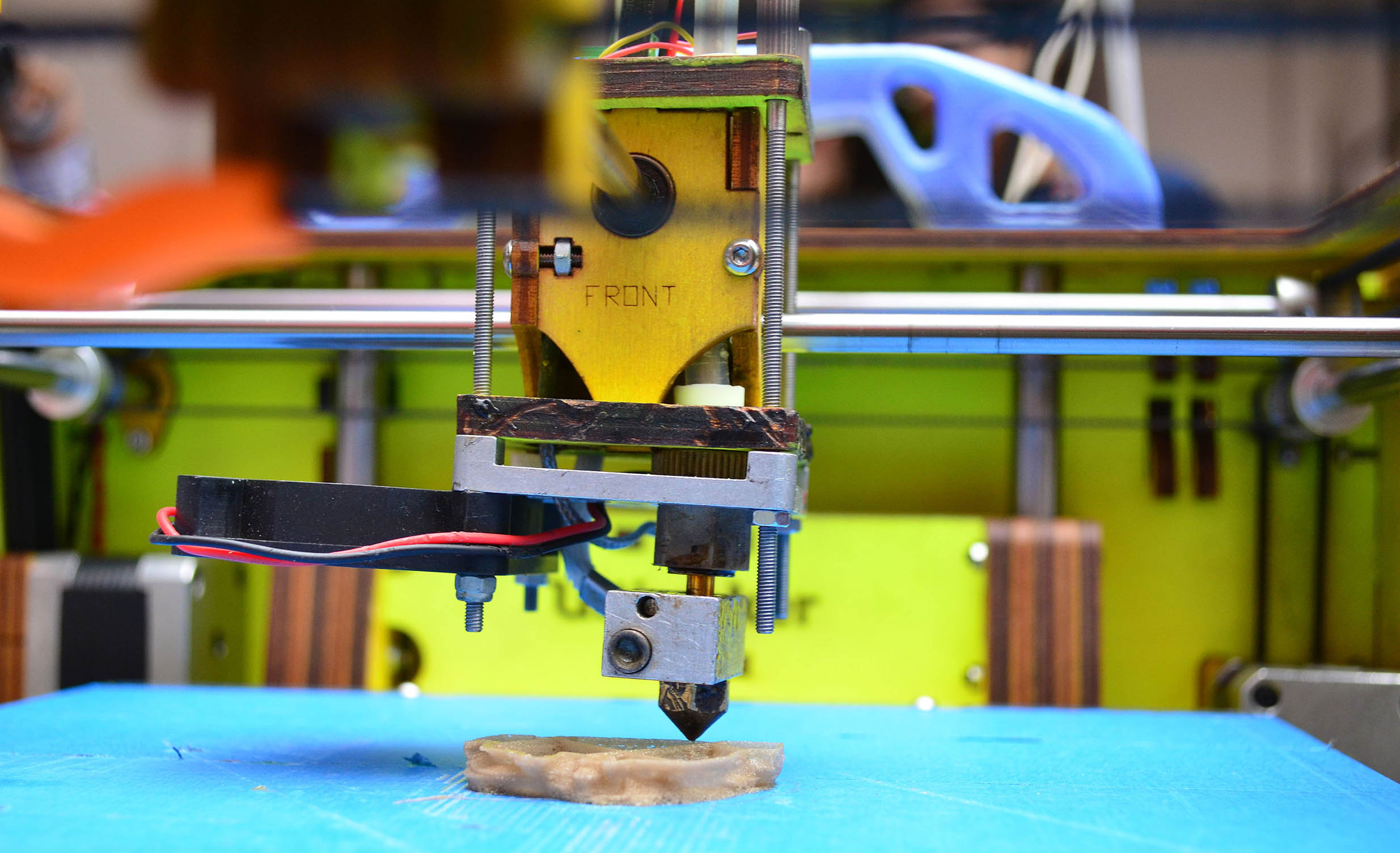
3D Printing a Melodica (6) – Buying a printer
18 July 2014 My own 3D printer for making melodicas? I’ve been doing some research into 3D printers. I’ve decided to buy one instead of using the services of a professional 3D printer, as the costs for one print out is similar to the cost of a lower end printer. It seems there’s two types of 3D printing available to me. Stereolithography One is a technology that’s been around since the eighties, called stereolithography (SL…
Read More » -
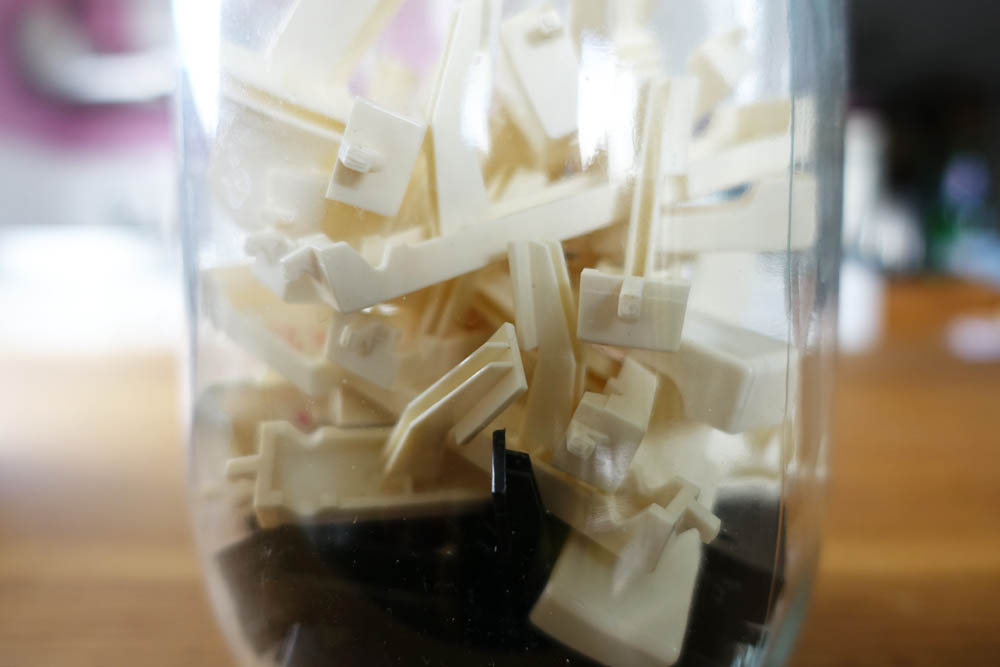
3D Printing a Melodica (5) – The range
15 July 2014 Nearly ready for printing! I’ve now nearly finished the 3D drawing of the melodica. I’m leaving it without a case, for a more exposed look. Instead I’ve incorporated a finger rest and thumb rest to grip the instrument. I’ve made the white keys slightly smaller so there’ll be room to add the ivory tops, and the black keys are just a flat base to which I can glue the wooden parts. There’ll…
Read More » -

3D Printing a Melodica (4) – Wood details
8 July 2014 Ebony and Ivory I’ve found that through extended practice, the plastic keys on the Yamaha P32D (and the Clavietta) melodicas start developing small pits. When this happens, I normally buy a new melodica, which means I also get the benefit of a whole new set of reeds. I’d like this melodica to be much more hard wearing, more in line with a quality instrument. I’ve had some very old ivory key tops…
Read More » -
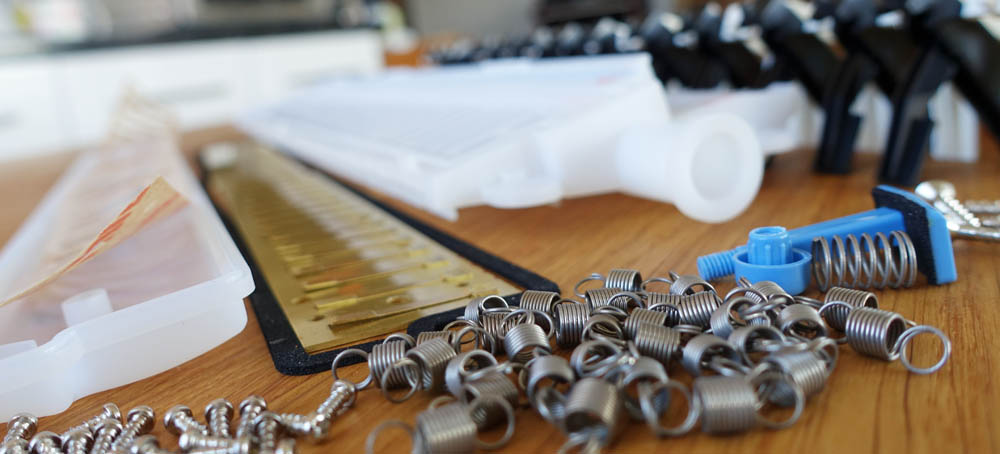
3D Printing a Melodica (2) – The beginnings
4 July 2014 Reverse engineering When it comes to computer assisted 3D design, I have a lot to learn, so I invited 3D design whizz, Simon Evans to the studio for the day, to show me how it all works. The idea is to study the instrument closely, measuring every last detail, with a view to recreating it digitally – a process called reverse engineering. We started by completely dismantling the Yamaha P32D melodica. This…
Read More » -
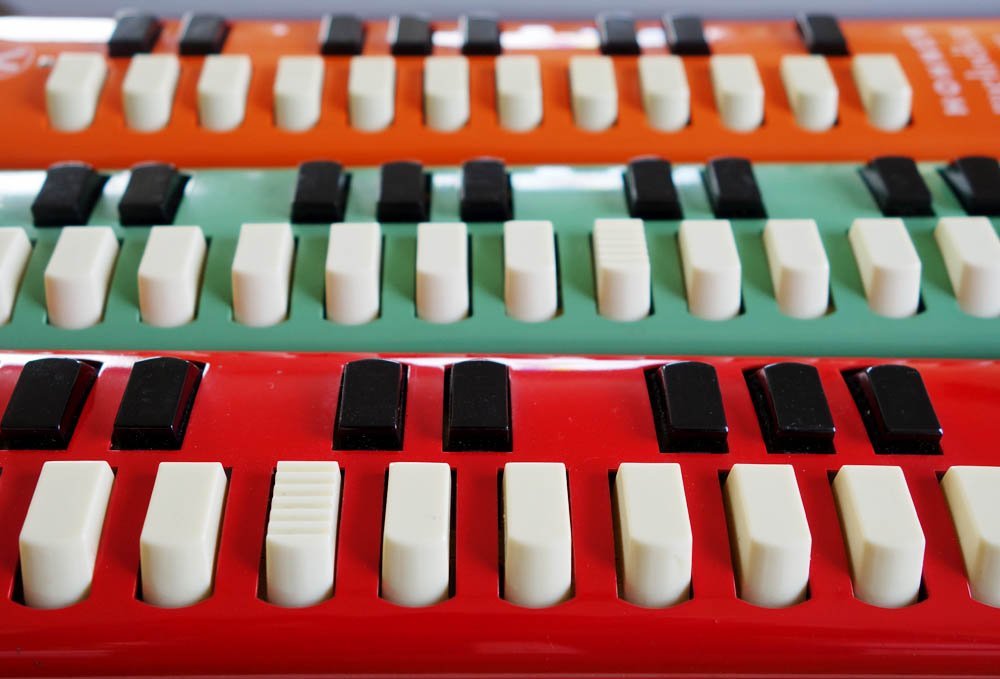
3D Printing a Melodica (1) – Why the melodica?
3 July 2014 Why the melodica? I started practising the melodica seriously a few years ago, when I needed an instrument to play Irish music with, which I could easily take to play at the informal pub sessions. I already played the piano, so the piano accordion was the obvious first choice. But I gave it a go, and there’s something about the bulky size and weight, and that huge sound, which put me off.…
Read More » -
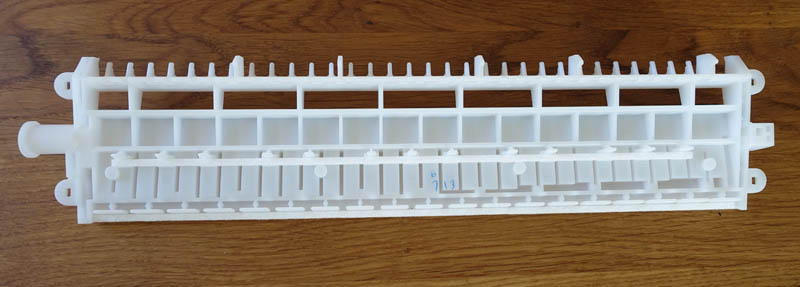
3D Printing a Melodica (3) – On the computer
7 July 2014 Measuring up While the melodica keys have been quite simple to measure up, it hasn’t been so easy trying to measure the chambers within the ‘skeleton’ section. This piece has been injection moulded with 32 air passages in place, and the only way to get into the space was by sawing it in half to reveal the cross section: From this new viewpoint we were able to recreate the air chamber in…
Read More » -
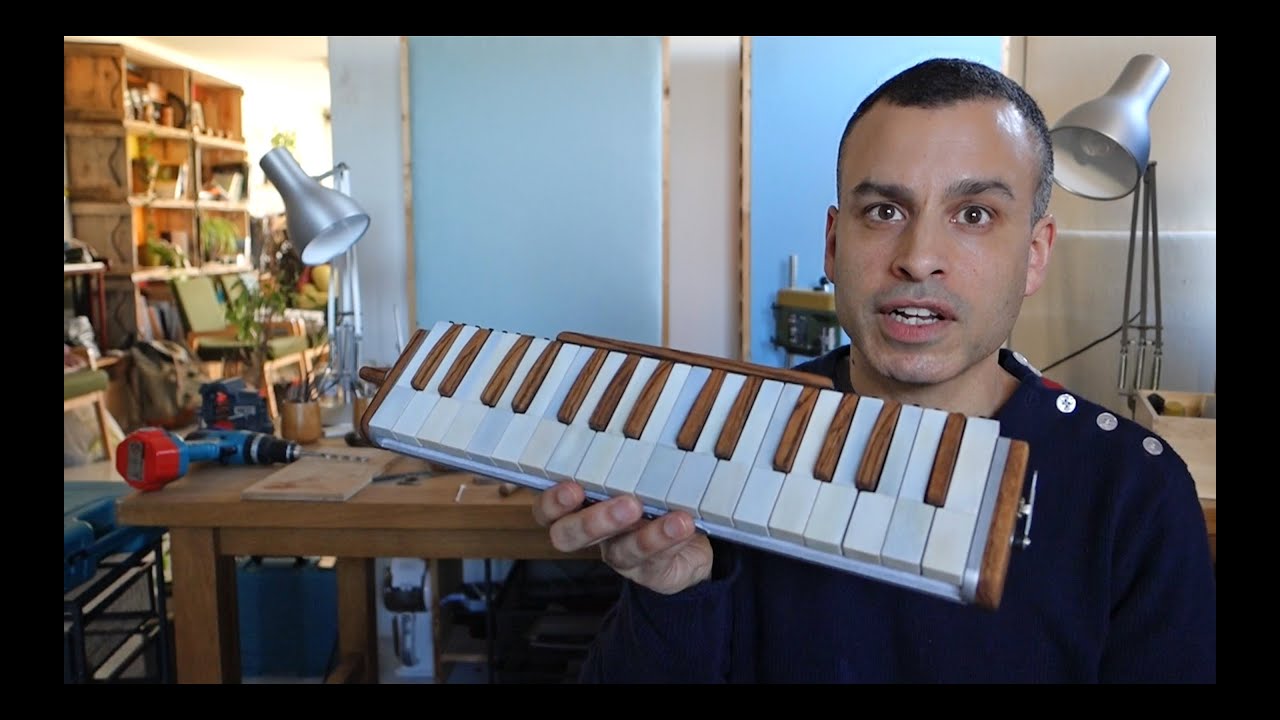
3D Printed Melodica
This melodica may look like a traditionally made musical instrument, but it was actually 3D printed in plastic, and sprayed silver to look like metal. The keys were coated with wood and ivory from a scrap piano to give it a curious vintage look. “The melodica has always had great potential as a serious musical instrument, it’s just that they’re made for kids”, says maker, Daren Banarsë. “I started playing on one of these toy…
Read More » -

10 Quick Ways to Up Your Melodica Game
So, you’ve been playing melodica for a while now, and you’re comfortable with the basics. Here’s some tips for taking your playing up to the next level No. 1 Use the mouthpiece rather than the hose. Keeping the mouth as close as possible to the instrument allows for more control and expression No. 2 Relaxation is the foundation of good technique. Too much tension will result in a harsh tone and awkward playing style No.…
Read More » -
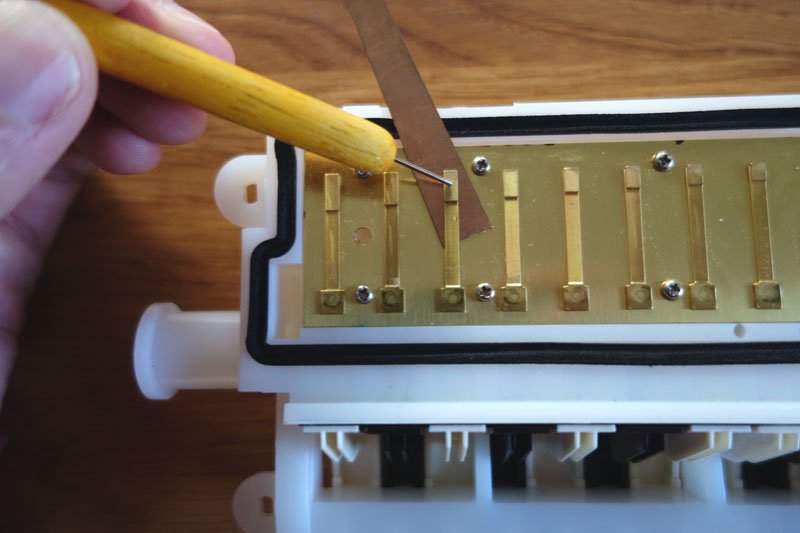
How to Tune a Melodica
How to tune a melodica This is a basic tutorial on tuning a melodica. Melodicas are from the free reed family of instruments, which include the harmonica (mouth organ), accordion and concertina. Just like their other family members, melodicas need regular tuning if they are being played a lot. Tuning a melodica is not complicated, but it can be fiddly, and takes some practice. It is also time consuming and requires patience. When learning, it…
Read More »

